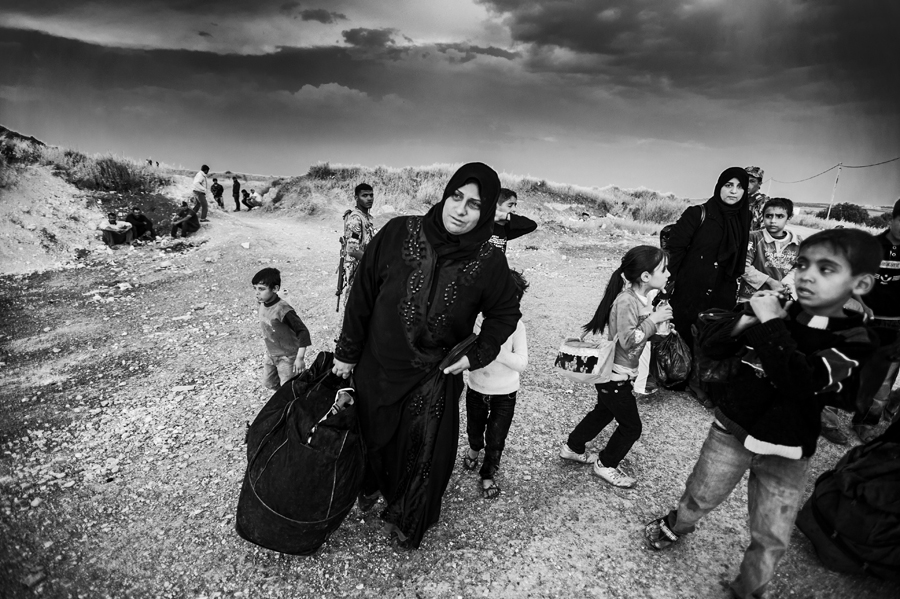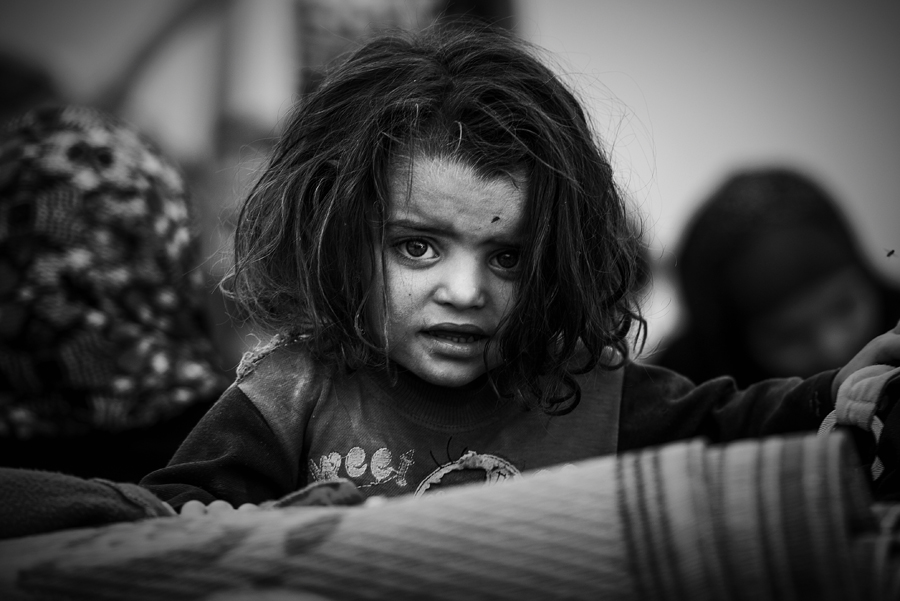Without question, Syria has become the bloodiest chapter in the Arab Spring. Today marks the three year anniversary of the Syrian uprising, which later devolved into a civil war that continues today. According to a UNHCR report released this week, Syria’s internal conflict has resulted in over 140,000 deaths, over 2.5 million refugees fleeing to neighboring states, and more than 9 million of its people uprooted from their homes, making Syria the world's leading country of forced displacement. After Kofi Annan’s unsuccessful peace plan in 2012 and a handful of inconclusive peace conferences since, Syria remains in a bloody stalemate between government forces and rebel factions.
How it All Began
As the Arab Spring spread like wildfire across the Middle East, Syria’s uprising began with a peaceful “Day of Rage” protests in the southern city of Deraa on March 15, 2011, but devolved to armed conflict after a harsh crackdown by security troops ordered by Syrian President Bashar al Assad. This triggered nationwide protests involving hundreds of thousands of citizens by July 2011. In December 2011, military defectors and Syrian protestors formed the Free Syrian Army, with the purpose of toppling the Assad regime. The country approached civil war as rebels took up arms to defend themselves and expel government forces. The capital Damascus, Aleppo, and historic Homs have seen the bloodiest fighting and fiercest destruction. The Free Syrian Army remains the primary Western-backed rebel force; however, several competing rebel factions emerged on the battlefield, including jihadist groups affiliated with al Qaeda.

Today, Syria is divided, with government forces strong in the western part of the country and competing rebel factions in control to the north and east. Rebel groups agree that the Assad regime must be toppled; however, beyond that common ground, the moderate rebels and the Islamist opposition groups compete on both political and religious ideology. Several groups like the National Coalition for Syrian Revolutionary and Opposition Forces were established to unite opposition supporters and help Syria gain international assistance from the Arab League, the United Nations, and Western powers. In the northeast, the Kurds have recently declared a provincial government, which brings the ownership of oil fields into to the mix. With some of the most effective rebel groups declaring ties to al Qaeda, a unified opposition to the Assad regime remains elusive.
Why Syria Matters

Why should we be concerned about the outcome in Syria? First, humanitarian implications; second, geopolitical implications.
First and foremost, Syrians have suffered unspeakable war atrocities and require humanitarian assistance. Syria’s citizens have suffered at least 17 incidents of intentional mass killings by pro-government militia, as well as chemical weapon attacks—notably the sarin-filled rockets fired on civilian populations in August 2013, which resulted in the deaths of approximately 500 people. Millions have fled the country for their safety, as well as the inability to find access to food, water, electricity, and medical care. The crisis has inflicted severe economic stresses and political uncertainties on Syria’s neighbors, including Lebanon, Jordan, Turkey, Iraq, and Egypt. These states have struggled to accommodate the millions of refugees and have requested increased international support. The number of Syrian refugees in Lebanon is quickly approaching one million and represents roughly 18 percent of the nation’s total population (230 refugees for each 1,000 Lebanese). Refugees housed in the Zaatari camp, the world’s second largest refugee camp located in northern Jordan and now the fourth largest city in Jordan, face dangers of roaming gangs and violence against women with little security to provide protections; with 2000 new residents arriving each day and an average of 13 children born each day within the camp, 55 percent of the camp’s population is under the age of 18.

The geopolitical implications of the Syrian civil war are increasingly dangerous. Many signs point to a situation where the civil war has developed into a proxy war between Saudi Arabia and Iran, with each country supporting competing religious sects and corresponding militia groups. Lingering fears harken to Iraq’s past sectarian violence: the current Syrian regime is Alawite (a branch of Shia Islam) in a Sunni-majority country. Furthermore, Lebanon’s Shia Hezbollah movment and al-Qaeda affiliated Sunni groups are competing with one another on the ground. Furthermore, great powers—chiefly the United States and Russia—accuse each other of funneling weapons to groups within Syria. An agreement between the United States and Assad’s forces laid the groundwork for Syria to remove all chemical weapons from the country by June 2014, but as of March 7th, less than one-third of Syria’s known chemical weapons materials had been moved out of the country and two immediate milestones had been missed. The United States, Western allies, and Gulf states support the Free Syrian Army and moderate opposition forces, while Russia, Iran, and Hezbollah support the Assad regime.
All photos copyright Sebastian Rich.


a global affairs media network
Syria Leads World in Forcibly Displaced After Three Years of Conflict

March 15, 2014
Without question, Syria has become the bloodiest chapter in the Arab Spring. Today marks the three year anniversary of the Syrian uprising, which later devolved into a civil war that continues today. According to a UNHCR report released this week, Syria’s internal conflict has resulted in over 140,000 deaths, over 2.5 million refugees fleeing to neighboring states, and more than 9 million of its people uprooted from their homes, making Syria the world's leading country of forced displacement. After Kofi Annan’s unsuccessful peace plan in 2012 and a handful of inconclusive peace conferences since, Syria remains in a bloody stalemate between government forces and rebel factions.
How it All Began
As the Arab Spring spread like wildfire across the Middle East, Syria’s uprising began with a peaceful “Day of Rage” protests in the southern city of Deraa on March 15, 2011, but devolved to armed conflict after a harsh crackdown by security troops ordered by Syrian President Bashar al Assad. This triggered nationwide protests involving hundreds of thousands of citizens by July 2011. In December 2011, military defectors and Syrian protestors formed the Free Syrian Army, with the purpose of toppling the Assad regime. The country approached civil war as rebels took up arms to defend themselves and expel government forces. The capital Damascus, Aleppo, and historic Homs have seen the bloodiest fighting and fiercest destruction. The Free Syrian Army remains the primary Western-backed rebel force; however, several competing rebel factions emerged on the battlefield, including jihadist groups affiliated with al Qaeda.

Today, Syria is divided, with government forces strong in the western part of the country and competing rebel factions in control to the north and east. Rebel groups agree that the Assad regime must be toppled; however, beyond that common ground, the moderate rebels and the Islamist opposition groups compete on both political and religious ideology. Several groups like the National Coalition for Syrian Revolutionary and Opposition Forces were established to unite opposition supporters and help Syria gain international assistance from the Arab League, the United Nations, and Western powers. In the northeast, the Kurds have recently declared a provincial government, which brings the ownership of oil fields into to the mix. With some of the most effective rebel groups declaring ties to al Qaeda, a unified opposition to the Assad regime remains elusive.
Why Syria Matters

Why should we be concerned about the outcome in Syria? First, humanitarian implications; second, geopolitical implications.
First and foremost, Syrians have suffered unspeakable war atrocities and require humanitarian assistance. Syria’s citizens have suffered at least 17 incidents of intentional mass killings by pro-government militia, as well as chemical weapon attacks—notably the sarin-filled rockets fired on civilian populations in August 2013, which resulted in the deaths of approximately 500 people. Millions have fled the country for their safety, as well as the inability to find access to food, water, electricity, and medical care. The crisis has inflicted severe economic stresses and political uncertainties on Syria’s neighbors, including Lebanon, Jordan, Turkey, Iraq, and Egypt. These states have struggled to accommodate the millions of refugees and have requested increased international support. The number of Syrian refugees in Lebanon is quickly approaching one million and represents roughly 18 percent of the nation’s total population (230 refugees for each 1,000 Lebanese). Refugees housed in the Zaatari camp, the world’s second largest refugee camp located in northern Jordan and now the fourth largest city in Jordan, face dangers of roaming gangs and violence against women with little security to provide protections; with 2000 new residents arriving each day and an average of 13 children born each day within the camp, 55 percent of the camp’s population is under the age of 18.

The geopolitical implications of the Syrian civil war are increasingly dangerous. Many signs point to a situation where the civil war has developed into a proxy war between Saudi Arabia and Iran, with each country supporting competing religious sects and corresponding militia groups. Lingering fears harken to Iraq’s past sectarian violence: the current Syrian regime is Alawite (a branch of Shia Islam) in a Sunni-majority country. Furthermore, Lebanon’s Shia Hezbollah movment and al-Qaeda affiliated Sunni groups are competing with one another on the ground. Furthermore, great powers—chiefly the United States and Russia—accuse each other of funneling weapons to groups within Syria. An agreement between the United States and Assad’s forces laid the groundwork for Syria to remove all chemical weapons from the country by June 2014, but as of March 7th, less than one-third of Syria’s known chemical weapons materials had been moved out of the country and two immediate milestones had been missed. The United States, Western allies, and Gulf states support the Free Syrian Army and moderate opposition forces, while Russia, Iran, and Hezbollah support the Assad regime.
All photos copyright Sebastian Rich.


